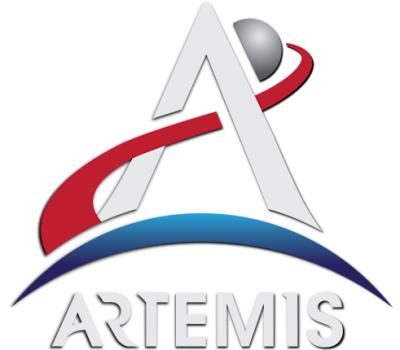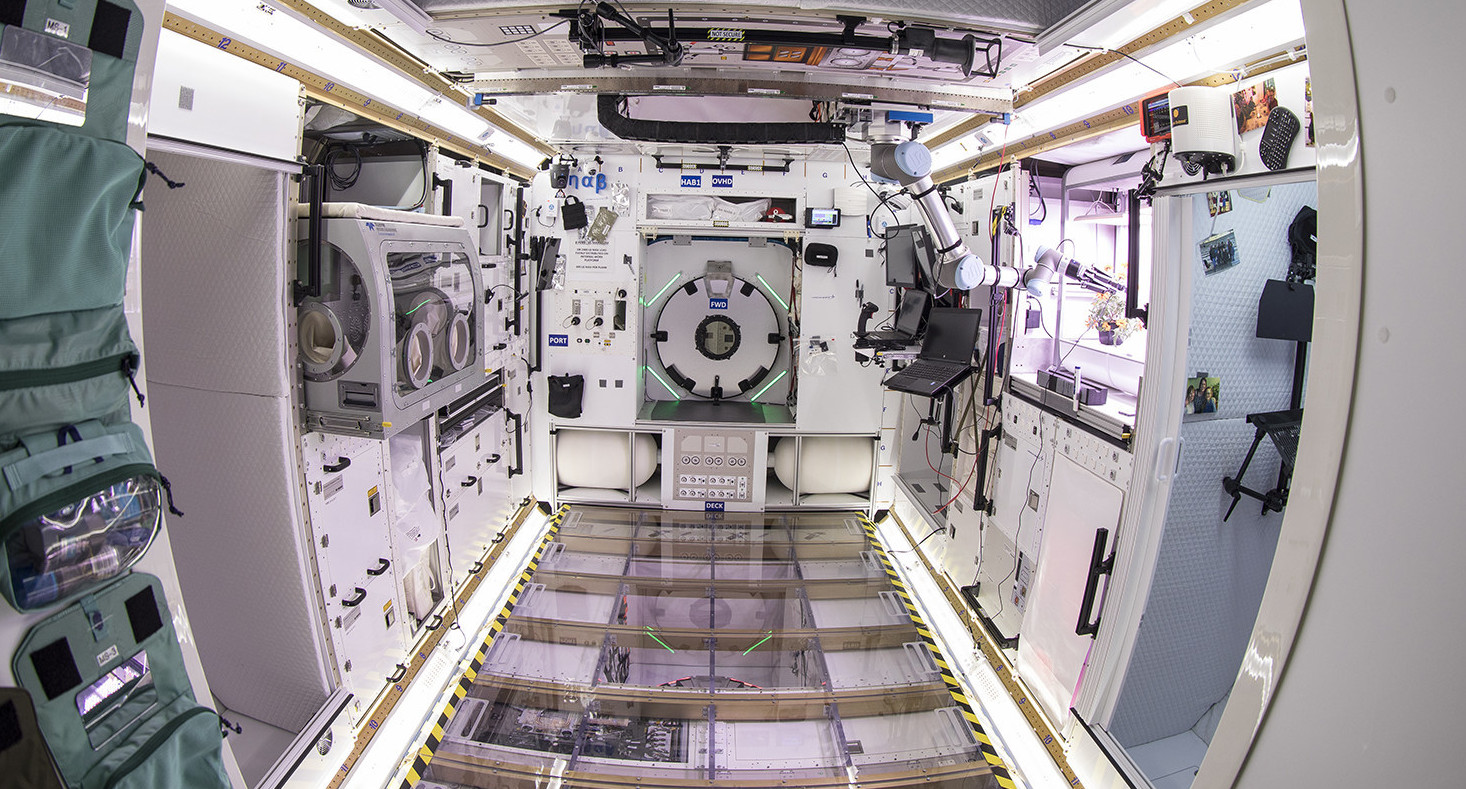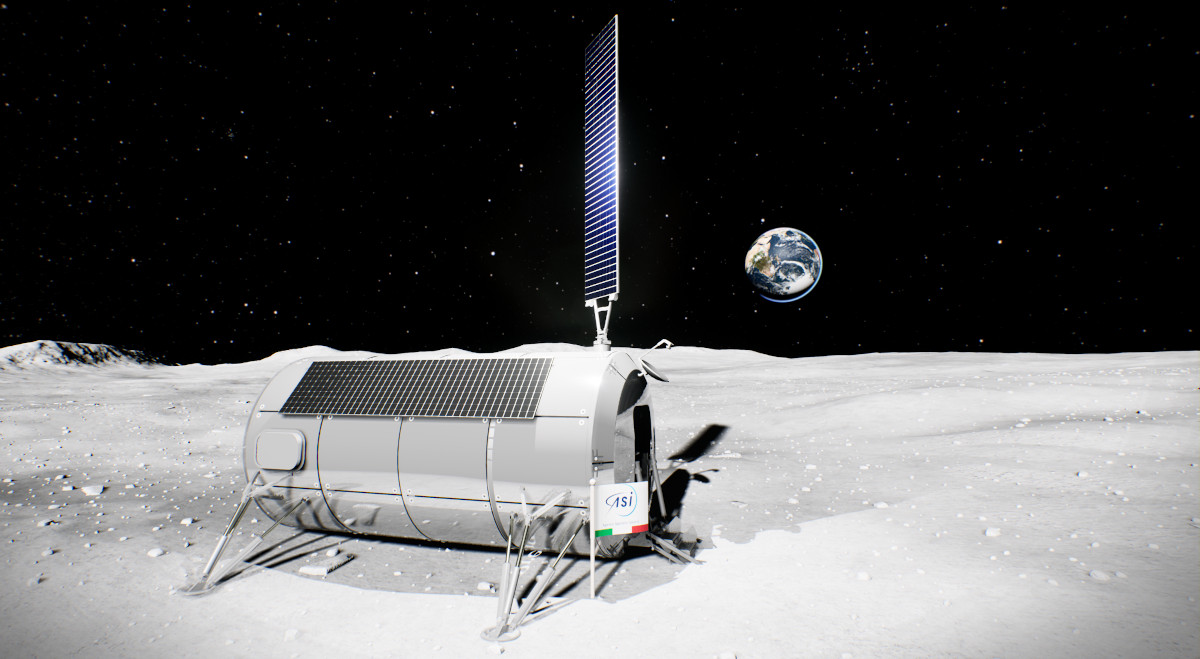When humanity first step foot on the Moon, they couldn’t stay around for very long. The Apollo program was limited by the technology of the era — given the incredible cost per kilogram to put a payload down on the lunar surface, it wasn’t feasible to bring down enough consumables for a lengthy stay. Even if they could have carried sufficient food and water to last more than a few days, the limiting factor would have become how long the crew could realistically remain cooped up in the tiny Lunar Excursion Module (LEM).
 In comparison, the Artemis program is far more ambitious. NASA wants to establish a long-term, and perhaps even permanent, human presence on our nearest celestial neighbor. This will be made possible, at least in part, to the greatly reduced launch costs offered by current and near-future launch vehicles compared to legacy platforms like the Saturn V or Space Shuttle. But cheaper rides to space is only part of the equation. NASA will also be leaning heavily on the lessons learned during the International Space Program; namely, the advantages of modular design and international cooperation.
In comparison, the Artemis program is far more ambitious. NASA wants to establish a long-term, and perhaps even permanent, human presence on our nearest celestial neighbor. This will be made possible, at least in part, to the greatly reduced launch costs offered by current and near-future launch vehicles compared to legacy platforms like the Saturn V or Space Shuttle. But cheaper rides to space is only part of the equation. NASA will also be leaning heavily on the lessons learned during the International Space Program; namely, the advantages of modular design and international cooperation.
While NASA and their commercial partners will still end up providing the bulk of the hardware for the Artemis program, many modules and components are being provided by other countries. From the Orion’s European Service Module (ESM) to the Japanese life support systems to be installed on the Lunar Gateway Station, America won’t be going to the Moon alone this time.
The latest international contribution to the Artemis program comes from the Italian Space Agency (ASI), who have announced their intention to develop a lunar habitation module they’re calling the Multi-Purpose Habitat (MPH) in collaboration with Thales Alenia Space.
Home Away from Home
To date most of the attention has been put on the parts of the Artemis project that will actually get astronauts to the Moon, and eventually, down to the surface. The uncrewed Artemis I, which launched just over a year ago, served as a shakedown for both the Space Launch System (SLS) rocket and Orion spacecraft. Artemis II, currently slated for November 2024, will be a similar mission, but this time with humans aboard. Astronauts won’t actually descend to the lunar surface until Artemis III, which current estimates place somewhere between 2025 and 2027.
Once all the elements of Artemis have been demonstrated, the idea is then to start making regular flights to the Moon. Yearly at first, and then with higher cadence as more of the infrastructure comes online. It’s around this point in the plan that the Multi-Purpose Habitat comes into play.
While in general the lunar landers proposed for the Artemis program are quite a bit larger than the Apollo LEM, there will still be a need for dedicated living and working space on the surface. With its own on-board power generation, life support, and communications system, such a facility could even serve as a shelter for astronauts awaiting rescue should something go wrong with their return vehicle.
There’s an argument to be made that such a capability could be provided by simply sending a spare lander to the Moon under remote control. But since the MPH doesn’t need to lift back off the lunar surface, it can afford to be larger and heavier — which means more usable space for working and living at a greatly reduced cost.
Space Station Tech?
Unfortunately, neither the Italian Space Agency nor Thales Alenia Space have released any technical information about the MPH. All we have is an artist’s render, which at least gives us a sense of scale thanks to the flag and stairway shown in the foreground. The module is also depicted with legs that appear to be designed to absorb some level of impact on touchdown, which is the only clue we have as to how the habitat will actually be lowered down to the lunar surface.
While admittedly nothing more than speculation at this point, it does stand to reason that ASI and Thales would look to existing space-proven designs as a basis for the for the MPH instead of starting from a clean slate. If that’s the case, then the resemblance the MPH bares with the Leonardo Permanent Multipurpose Module (PMM) of the International Space Station module might be more than just coincidence.

Before being permanently attached to the ISS in 2011, Leonardo was one of three Multi-Purpose Logistics Modules (MPLMs) built by ASI. These pressurized containers were carried inside the Space Shuttle’s cargo bay, and berthed to the Station to be unloaded. They would then be returned to the Shuttle, and brought back down for reuse. Leonardo and its twin Raffaello flew to the Station a combined twelve times, while Donatello never left Earth.
With the retirement of the Space Shuttle, it was decided to modify Leonardo so it could remain permanently berthed to the ISS. Interestingly, Donatello ended up being converted by Lockheed Martin into the Habitat Ground Test Article (HGTA) in 2019. The HGTA was used to study different internal layouts for a potential habitat module that would be used on the Lunar Gateway Station.

Between the experience gained by operating Leonardo and Raffaello in space, and the studies currently being done on how their design could be adapted into living and working space, it would seem a lot of the groundwork for the MPH is already in place. It’s hard to believe that ASI and Thales wouldn’t take advantage of it.
The Moon is Calling
While we’ll have to wait a bit longer before we get any concrete details on Italy’s Multi-Purpose Habitat, the simple fact that it’s actively being worked on is reason enough to be excited. It’s another sign that the international community is taking the Artemis program seriously, and that we may finally be on the path towards a sustainable lunar colony.
Living and working on the Moon won’t be easy, but it’s still far more practical in the near term than any other destination in the solar system. Before we can even make an attempt at a crewed mission to Mars, spending some time on the lunar surface will provide valuable data on what it will take to survive in a hostile environment far from the comfort of Mother Earth.


















It does make me wonder, why crash the iss into point nemo when they could grab it and throw it at the moon.
Setting aside the fact that the ISS wasn’t designed for operation in cislunar space: The ISS is *absurdly* bigger than the planned station (Gateway) for the Moon. It’s about half a million kilograms.
Gateway is literally over 10 times smaller (40 tons). The delta-V needed to get the ISS to the moon would be completely ridiculous, especially because you can’t even apply that much thrust to it because it’s not designed for the stresses.
Plus, I mean, the ISS is like 20+ years old. As much as we’d like to believe stuff lasts forever in space, it really doesn’t – we’re just good at making old, beat up robots work. Not a great plan for a human habitat.
On top of all those great points, reusing the ISS would reduce the opportunity to make fundamental improvements on the design of the ISS. For example, biological elements turned out to be an issue on the ISS, because nothing can be washed properly. So, if moon projects can use improved anti-microbial surfaces, or include some capacity for washing, then all the better. Reusing the ISS would mean that you’re carrying all that contamination and suboptimal design choices onto the next application.
Maybe they couldn’t? Would it even survive the acceleration in one piece?
That might not be a problem. You could limit the acceleration of each burn and increase the number of burns. That will increase the flight time but that would probably be the simplest solution to the problem.
Again, IF you would do something like that.
“That will increase the flight time”
Increasing the flight time isn’t zero risk *or* simple. The longer it takes to get to your target, the more perturbations get involved in the overall corrections. There’s a limit at which you can’t even reasonably do it if the maximum delta-V which can be applied exceeds the uncertainty in the calculation.
And even if you ignore the uncertainty in the flight path, there’s uncertainty in the burn response, too. Each time you start/stop thrust, the entire spacecraft responds to the stresses: so short burns have inherently more uncertainty than longer ones.
Ambitious, I like it, but if I were up there I would not want to be sitting around with no chance of backup inside a repurposed used space station which began construction before Quake III came out that also has holes drilled in it. Too many corners to cut in an environment which abhors cut corners
Maybe not… but if you were one of two people on the moon with a metorite hole in your habitat, wouldn’t it be nice to know there’s a scrap yard just a mile away?
Seems to me that no gravity and 10 m/s^2 gravity are both more manageable than 1.62 m/s^2. :)
How ever are you going to be able to walk fast in such a tube without banging your head, due to the low gravity? I expect it would feel like walking under water. You try to propel yourself forward, but you don’t have enough grip below your feet and will mostly go up instead of forward.
I would expect the habitat to have ropes and straps everywhere, in order to pull yourself forward.
Two words: Velcro shoes (TM) ^^
If it has enough space for walking around to be an issue, the astronauts should count themselves very lucky. One lightweight handrail would probably do the trick
“I expect it would feel like walking under water. You try to propel yourself forward, but you don’t have enough grip below your feet and will mostly go up instead of forward.”
Most humans are positively buoyant in water, so this isn’t a great analog: fat/muscle basically range only a few percent away from neutral, so lunar gravity is *much* higher.
Should just fill the structure with monkey bars to move around with.
I’m very skeptical of Artemis (especially Artemis III). SLS (Space Launch System) can’t lift Orion with enough fuel to get to the Moon. We’ll be doing a dozen unmanned launches just to lift fuel up to prepare Orion’s primary engine. I believe the fuel is MON+MMH. Not sure how different this is from the usual Aerozine 50 and nitrogen tetroxide used with similar engines)
“I’m very skeptical of Artemis (especially Artemis III). SLS (Space Launch System) can’t lift Orion with enough fuel to get to the Moon.”
Um… SLS has already launched Orion to the Moon in one shot? Like, over a year ago?
If you’re saying it doesn’t have enough fuel to get to the lunar *surface*, yes, that’s the entire point – Orion never goes to the lunar surface at all. That’s the human landing system’s job (and yes, Starship HLS takes ~dozen+ launches to fuel, but that’s because Starship HLS is vastly overweight for what it’s doing). And while it might seem insane to do it this way, the key idea is that the only bit you need to get to the Moon *quickly* is the part with the humans. Everything else you launch slow.
Think you have your spacecraft confused here. Orion has already been to the Moon. It’s Starship (technically HLS) that will need refueling to get to the Moon, but that’s how it’s designed to work so not sure what the concern is.
“but that’s how it’s designed to work so not sure what the concern is.”
Well. I mean. There’s a *ton* of concern in the sense of “I dunno if SpaceX can possibly do this” but yeah, the concern’s with Starship specifically, not Orion or Artemis overall. Blue Moon, for instance, would only need a few refuels since it’s a fraction of Starship’s size. The scale difference between Blue Moon/Starship HLS was the reason for the lawsuit/protest they filed.
Why the concern? SpaceX has spent the last decade+ repeatedly dunking on the established aerospace players at every turn (cost, reusability, launch rate, etc), I see no reason to doubt them now.
I’ll admit 2025 is looking unlikely, they’ve still got to prove out in-orbit propellant transfer, but there’s excellent chance NASA wouldn’t be ready in time even if Starship was. Last time I heard, they still didn’t have any spacesuits for the astronauts to wear on the surface.
The spacesuit drama is exceptionally minor compared to SpaceX. Some part of me thinks it was highlighted just so it didn’t seem like an anti-SpaceX report. It specifically said HLS was the critical path risk, and in GAO-speak, that report was *scathing*.
Musk has been trying to set up regulatory agencies as the fall guy for Starship, which is always a bad sign.
Ok, I saw the comment about the ISS but what about the Space Shuttles?
They are likely to be stored somewhere and if a movie ever told me one thing, than some old tech like this coult be flight ready in about 24 hours.
And I assume, with the lower gravity they could easily landed on the moon. You just need a way to get them there!
“Ok, I saw the comment about the ISS but what about the Space Shuttles?”
Still twice as massive as the planned Gateway, but now you’re getting into reasonable levels of silly. Starship is roughly equivalent to the shuttle’s dry mass, so yes, effectively we are planning on landing something shuttle-scale on the Moon.
Without an atmosphere landing a Space Shuttle is quite difficult, it’s a glider during reentry
none of the proposed moon base missions are interesting,all burdened by closed minded ideas
of only doing what has worked already ,lowering the bar,tokenism and virtue signaling
that and flat out ignoring the known challenges
appearing to be the whole point
that were discovered on the apollo missions
moon dust babys,deadly,machinery destroying
moon dust
station needs air locks AND dust locks
no point at all in going unless water is found/made/or mined
no point in going unless its to stay
no point in going if its not the first step in
asteroid mining and further planetary exploration
“no point at all in going unless water is found”
So… I’m guessing you never bothered to look up where the Artemis landing spots are.
“When humanity first step foot on the Moon, they couldn’t stay around for very long. The Apollo program was limited by the technology of the era — given the incredible cost per kilogram to put a payload down on the lunar surface, it wasn’t feasible to bring down enough consumables for a lengthy stay. ”
I know how this is meant and I don’t mean to be unfair, but I think technology itself wasn’t so much of a problem.
It’s a political, rather. If humanity worked together as one, money and material resources would be the least of a problem.
For cosmic navigation, the same basic technology can be used as what seamen had used for centuries.
A C64, – a reliable one-, is more than sufficient. The Apollo AGC was very good, still is.
But I understand where this is coming from.
The Americans believe in hi-tech, in technological superiority.
– And no, I am not bashing here.
It has been the same in the 60s, already, when NTSC colour standard was being used as a comparison for superiority
(the USSR still had black/white TV, which was being considered inferior despite its better resolution).
That’s also as to why I think that SpaceX uses lots of fancy tech (futuristic looking suits, big flat screens in the capsule), that’s not adding much to functionality.
By contrast, the Russians use older, but more reliable tech.
Many samples had been featured here at HaD, already. Like that clock or mechanical globe for the Sojus capsules.
Anyway, that’s just me of course. I’m a layman only.
But looking back, I don’t think it’s a technology problem.
The USA had fine engineers and scientists in the 60s/70s/80s, with very promising concepts.
Please have a look at these older designs, for space stations, moon bases and asteroid outposts etc.
The people back then did the math, too.
It’s not too unrealistic.
With a bit of optimism, something that used to be associated with Americans by us Europeans, it can be done. 🙂👍
From an Italian point of view, the enabling technology for lunar habitation was the development of the ISSpresso zero-g espresso maker. Viva Italia! https://en.wikipedia.org/wiki/ISSpresso